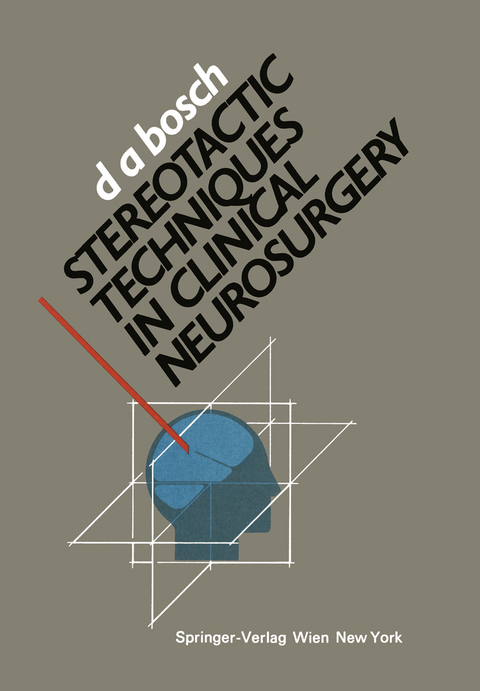
Stereotactic Techniques in Clinical Neurosurgery
Springer Wien (Verlag)
978-3-7091-8809-5 (ISBN)
1: Introduction.- I. Stereotaxy in Experimental Brain Research.- II. Stereotaxy in Man.- III. Stereotactic Methodology.- IV. Integration of Stereotactics in Clinical Neurosurgery.- 2: Stereotactic Principles.- I. Development.- II. Definition.- III. Stereotactic Atlasses.- IV. Invisible and Visible Targets.- V. Preparation of the Stereotactic Intervention.- 3: Expanding Field of Stereotactic Surgery.- I. Functional Stereotactics.- II. Mass Lesions Stereotactics.- III. Localizing Stereotactics and Open Surgery.- 4: Modern Instrumentation.- I. Introduction.- II. CT Guided Stereotactic Apparatus; Technical Aspects.- III. CT Guided Stereotactic Surgery.- 5: Indications for Stereotactic Interventions.- I. Indications for Functional Stereotactic Interventions.- II. Indications for Diagnostic Stereotactic Interventions.- III. Indications for Therapeutic Stereotactic Interventions.- IV. Indications for Localizing Stereotactic Interventions.- 6: Contraindications for Stereotactic Interventions.-I. Contraindications for Functional Stereotactic Interventions.- II. Contraindications for Diagnostic Stereotactic Interventions.- III. Contraindications for Therapeutic Stereotactic Interventions.- IV. Contraindications for Localizing and Interventional Stereotactics.- 7: Stereotactic Techniques.- I. Leksell's Apparatus.- II. Preparation of the Patient.- III. The Positioning of the Patient.- 8: Pitfalls.- I. Technical Problems.- II. Pitfalls by Underlying Pathology.- 9: Functional Stereotactics.- I. Extrapyramidal and Cerebellar Tremor.- II. Intractable Pain Syndromes.- III. Brainstem Stereotactic Surgery in Cancer Pain.- 10: Mass Lesions Stereotactics.- I. Discussion of Deep Seated Tumors According to Growth Pattern.- II. Presentation of Our Own Material and Discussion of Other Reports.- 11: Stereotactic Localization with Subsequent Lesion Treatment.- I. Introduction.- II. Colloid Cysts of the Third Ventricle.- III. Primary Deep Seated Hematomas.- IV. Deep Seated Small ArteriovenousMalformations.- V. Stereotactic Aiming and Open Surgery in Stereotactic Space for Small and Deep Seated Tumors.- 12: Illustrative Cases.- 13: Integration of Stereotactics in Clinical Neurosurgery.- I. Introduction.- II. The Computer in Neurosurgery.- 14: Future Possibilities.- I. Introduction of Magnetic Resonance Imaging.- II. Future Applications of Stereotactics in Functional Disorders.- III. Future Applications of Stereotactics in Mass Lesions.- IV. Conclusion.- References.
| Erscheint lt. Verlag | 5.1.2012 |
|---|---|
| Illustrationen | Douwe Buiter |
| Zusatzinfo | XII, 278 p. |
| Verlagsort | Vienna |
| Sprache | englisch |
| Maße | 170 x 244 mm |
| Gewicht | 514 g |
| Themenwelt | Medizinische Fachgebiete ► Chirurgie ► Neurochirurgie |
| Schlagworte | neurosurgery • Surgery |
| ISBN-10 | 3-7091-8809-1 / 3709188091 |
| ISBN-13 | 978-3-7091-8809-5 / 9783709188095 |
| Zustand | Neuware |
| Informationen gemäß Produktsicherheitsverordnung (GPSR) | |
| Haben Sie eine Frage zum Produkt? |
aus dem Bereich


